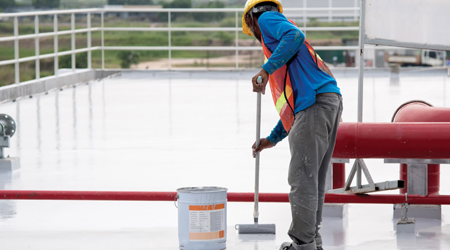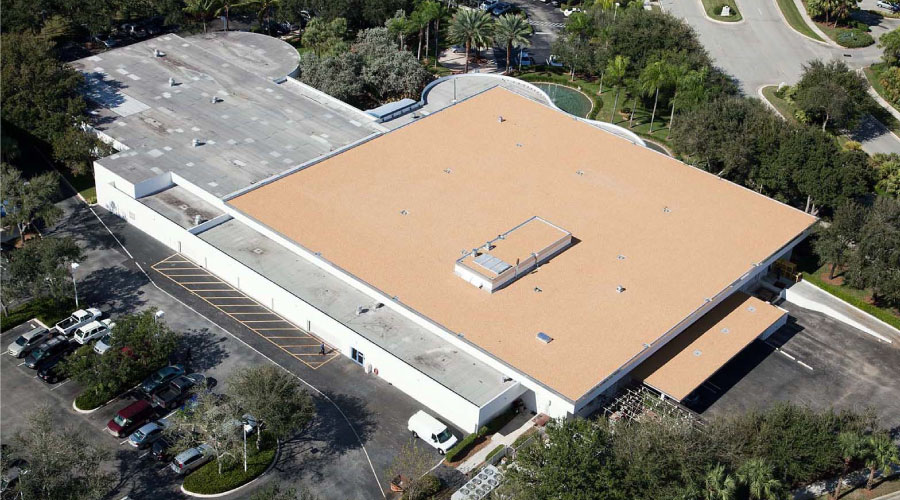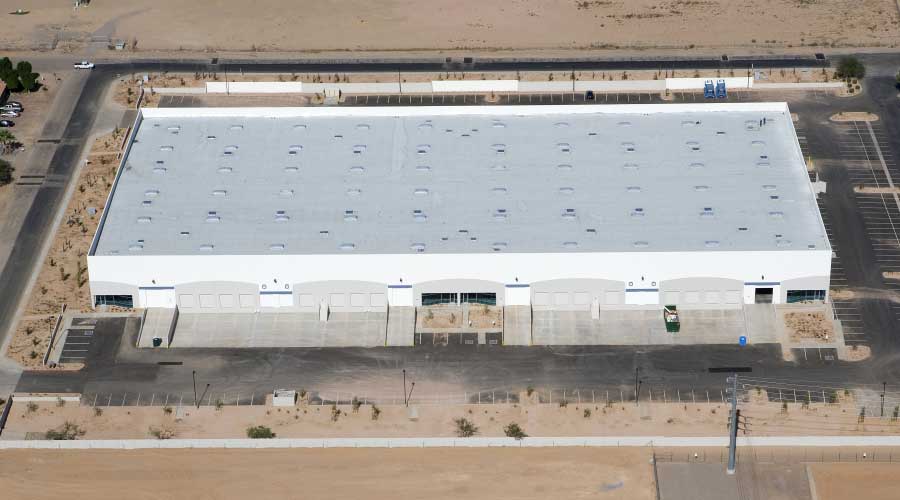Roofs: Inspection, Conditions and Coatings
Applying roof coatings to protect roof systems and extend their performance lives is a proven strategy for many institutional and commercial facilities, but coatings are not cure-alls. They will not take the place of preventive roof maintenance, and they cannot restore failing roof systems. For roof coatings to deliver their intended benefits, managers need to pay close attention to the ongoing inspection and repair of existing roof systems.
During annual roof inspections and maintenance, workers need to remove all debris, dirt and flammable material such as leaves, pine needles, and construction material. They also need to carefully check seams that run through areas of ponding water using a pick and reseal them where separations have occurred. Applying a special ponding roof coating in these areas or bridging them with a ponding mat can greatly extend the life of the roof covering.
Workers also need to check downspouts for blockages and clear them to prevent backups onto the roof through the scuppers. If they do not perform this cleaning often or thoroughly enough, water can damage the roof covering, enter facilities, and damage the interior. The cost of repair can easily climb into the thousands or even tens of thousands of dollars, and occupants can be disrupted for months while repairs are ongoing.
In areas where high winds, hurricanes, or tornadoes are a threat, workers need to take precautions to protect damage to the roof surface from flying objects, such as tree branches, landscaping stones, stacked firewood, and outdoor furniture.
Finally, workers need to take special care during coating application to ensure that both the roof membrane and coating are adhered sufficiently to prevent liftoff. Roofing is either mechanically attached or fully adhered. Mechanically attached roofing is attached to the insulation by a screw and plate fastened through the roofing into the insulation every 6 inches at the edge. A fully adhered roofing system is either self-sticking or glued to the insulation so that every square foot is bonded. To determine the roof type, a worker can go on the roof on a windy day and observe the way the roofing behaves. If it is fully adhered, it will hardly flutter at all, but if it is mechanically attached, it will flutter in waves.
— Thomas A. Westerkamp
Related Topics:














